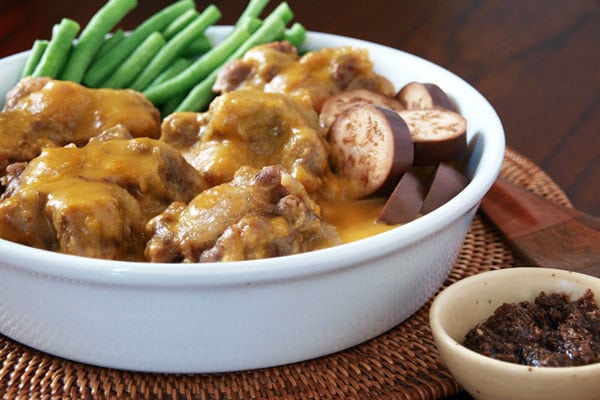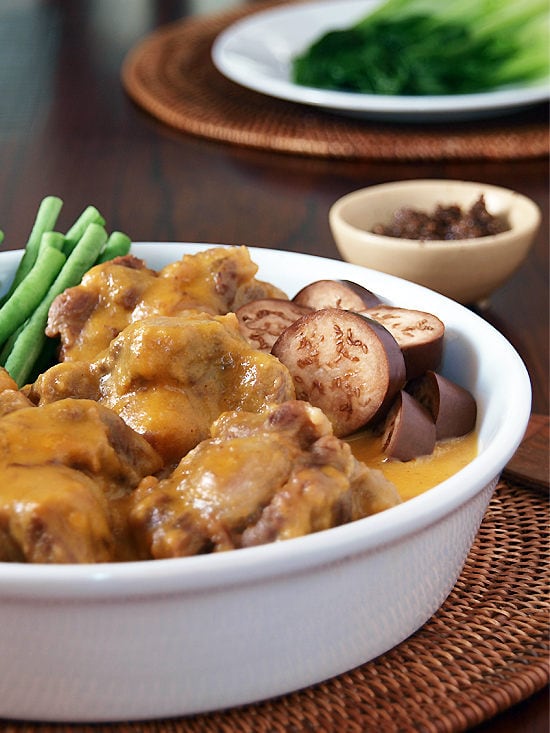While I’m visiting my family in Japan, I have asked several blogger friends to blog-sit for me and today’s sitter is Raymund from Ang Sarap (A Tagalog word for “It’s Delicious”). He’s my last guest blogger during my trip. I told Raymund once that if I ever become a billionaire (not a millionaire haha), I would want to hire him as my private chef. The main reason why I said that is because he posts delicious food almost every day. They are not just Filipino dishes but include many other international recipes as well. When you visit his blog and see the category list on the right-hand side, you will immediately see the cuisine’s names there. As of today, he has made dishes from 55 different countries. Me? Maybe less than 8-10 if “non-authentic” recipes count! Since I started blogging, I learned that my Filipino food blogger friends (male and female) are passionate about food, just like Ray whom I introduced to you last week. That’s probably the reason why we don’t see too many Filipino restaurants even in a big city; they are all cooking at home for the family! Now please welcome Raymund with a popular Filipino stew called Kare Kare.
This is my third time to guest post. I know it is not a lot but there is a popular saying which is “third time lucky” and indeed that true as I am invited in this blog. It’s definitely one of my favorite food blog sites around. So let me first tell something about me before the recipe that I will be sharing. Well my name is Raymund and I am the person behind the blog called Ang Sarap (A Tagalog word for “It’s Delicious”). I am a Software Developer / Architect by profession. My passion is to cook, travel, and take photographs (isn’t that the best combination). I’ve been cooking since I was 7 years old and since then I have been cooking my family dinners. I’ve traveled a bit and lived in different countries due to my profession. Hence I have a good grasp of local the different cuisines which is very evident on my blog. The blog is nearly two years now. It has a good reception in the food blog circle as well as Filipino communities around the world. It showcases dishes basically from everywhere but with Filipino, Spanish and Chinese twists which are the primary influence in Philippine cuisine. The goal of my blog is to educate people about what the Philippines has to offer in terms of culinary arts. As I said in my past posts why the Philippines is the only Asian country without an identity or even representation. What I mean by that is you have the Malaysian, Singaporean, Vietnamese, Indian, Japanese and Thai. But, where are the Philippines, it is even known? That’s what I want to change, and I hope I can start with this blog. Now I guess that’s enough about me. If you want to know further please follow my blog. Start learning about what you are missing if you haven’t tried Filipino dishes yet. For this guest post, I was thinking of introducing something very uniquely Filipino. It was hard choosing it. I don’t want to present something that might be already popular like the Adobo or a dish that might be Filipino but tastes something similar in other neighboring countries like Sinigang. So after several sleepless nights, I think Kare-Kare might be a good dish to showcase. I never had tasted or seen something like this elsewhere. Kare-Kare is a popular stew in the Philippines that is served on special occasions like Feast Days (fiesta), Birthdays, and family gatherings. The dish’s defining ingredient is its peanut sauce. This is made out of peanut butter, ground toasted rice and annatto seed extract this is then cooked with a variety of local vegetables and meat (usually oxtail or ox tripe). It’s a bit pale in taste compared to other rich Philippine dishes. That’s why it is often always accompanied with a salty shrimp paste called bagoong. This dish probably had originated from Pampanga as it is really popular there. Every household in the said province offer this as their specialty and have their own better versions that stand out among the others. There are also some suggestions that it originated from the Southern island of Mindanao where this dish is popular as well. It was said that this is one of the regal dishes of the Moro elite who settled in Manila even before the Spanish arrival. Another suggestion says that it has a Japanese influence. The name “Kare-Kare” is derived from the Japanese word “Kare” which is a Japanese word for a curry. So where this dish did really came from? Well, I don’t really know. But, most experts say it was from Pampanga also called the culinary capital of the Philippines. I guess this is not for everyone due to a lot of people have allergies to nuts. Also,if you don’t have one you might freak out with the part of beef used. But if you are adventurous in food, this is a must-try! Especially for those who love peanut butter, you will feel good about this dish. {Facebook} : {Twitter} : {Feed}
Wish to learn more about Japanese cooking? Sign up for our free newsletter to receive cooking tips & recipe updates! And stay in touch with me on Facebook, Pinterest, YouTube, and Instagram.



